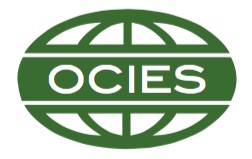Structures, history and hope: A case study of mechanisms that maintain advantage in education
Abstract
International partners must always realise that local education systems interact with local social environments. Local perspectives are active agents in shaping the effectiveness of educational change. Underlying cultural, symbolic and social structures set the elastic limits of change and impact the formulation and implementation of policy arrangements. This paper evaluates the results of educational reforms in Samoa aimed at changing the patterns of advantage in the education system. It examines the social and political environment in which the reform package was developed and implemented focusing on the dispositions of different social actors. It analyses the lack of change in the patterns of advantage. It argues that underlying social assumptions meant key change options were not included in the package resulting in the reproduction of the structure of inequity. Formulating effective educational change strategies requires the partners to link technical developments to change in the replication of social and symbolic environments.
Downloads
Published
Issue
Section
License
The International Education Journal: Comparative Perspectives is the official journal of the Oceania Comparative and International Education Society. The IEJ, (ISSN 1443-1475), publishes a general volume bi-annually in July and December and also publishes Special Editions occasionally. It is a free, open-access scholarly journal, managed by volunteers. There are no article processing charges, or any charges to authors.
In relation to intellectual property, as of 2020, the IEJ: CP claims only first publication rights; copyright of all work published in the journal remains with the authors under Creative Commons copyright license CC-BY-ND (4.0). Author(s) retain all rights to their works, ensuring that reference to the International Education Journal: Comparative Perspectives is clearly stated on any copies made or distribution. Submissions must not involve third parties with a claim to copyright, and be the sole work of the author(s). It is the responsibility of the author(s) to secure permission to reproduce photographs, illustrations, figures or tables. Single images, tables or figures can be re-used . If more than a single image or table are to be re-used authors must attribute first publication to IEJ: CP notify the IEJ: CP Editor. Authors may also make derivative works which are subject to these limitations.
See https://creativecommons.org/licenses/by-nd/4.0/ for more detail.
Re-distributed or used material must be referenced to the International Education Journal: Comparative Perspectives.
